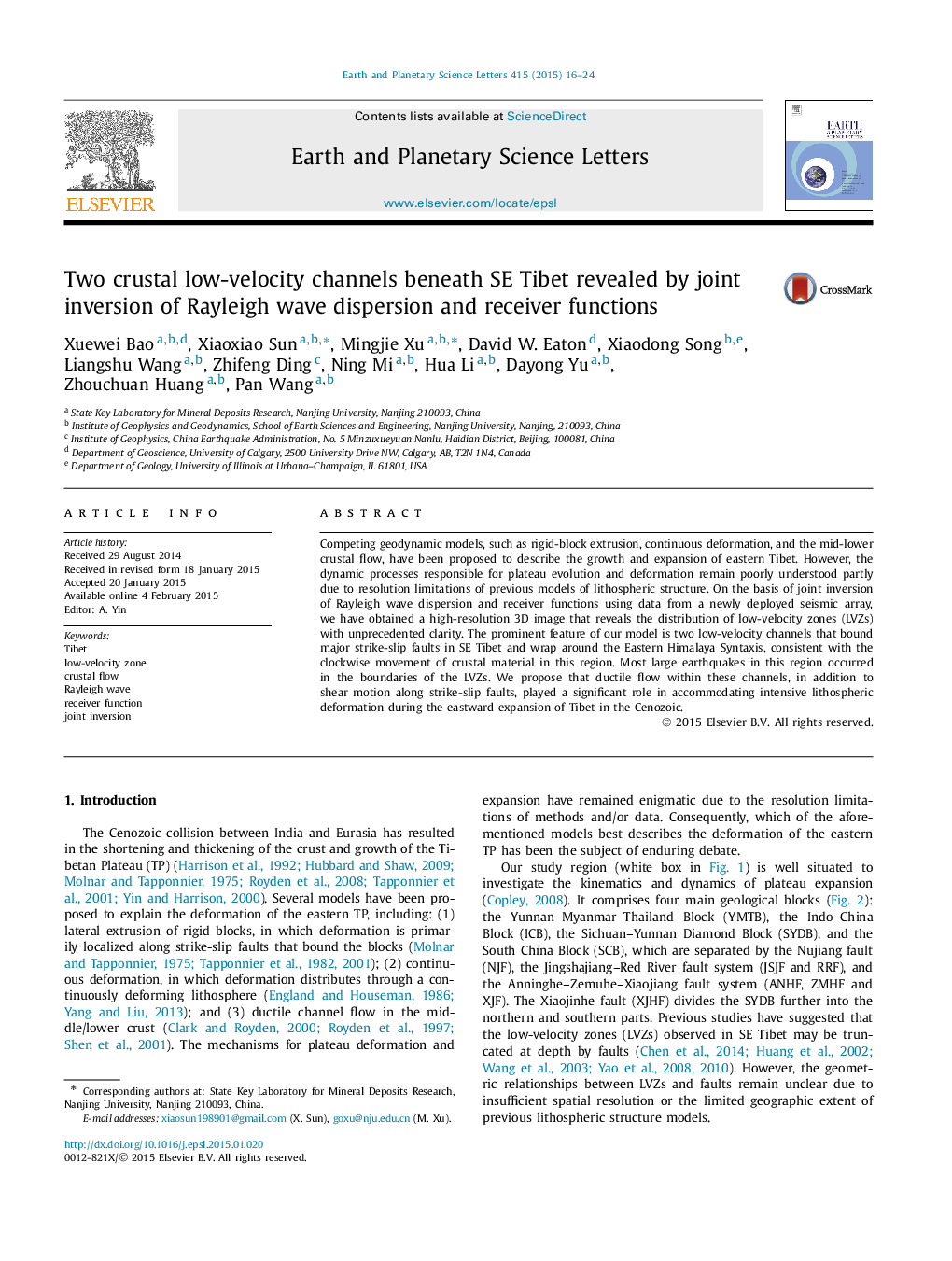| Article ID | Journal | Published Year | Pages | File Type |
|---|---|---|---|---|
| 6428534 | Earth and Planetary Science Letters | 2015 | 9 Pages |
â¢Image two channels of low-velocity zones with unprecedented resolution.â¢The two channels bound main strike-slip faults of SE Tibet.â¢The two channels wrap around the Eastern Himalaya Syntaxis.â¢Large earthquakes occurred at the edge of the two channels.â¢Deformation of SE Tibet is accommodated by both ductile flow and shearing.
Competing geodynamic models, such as rigid-block extrusion, continuous deformation, and the mid-lower crustal flow, have been proposed to describe the growth and expansion of eastern Tibet. However, the dynamic processes responsible for plateau evolution and deformation remain poorly understood partly due to resolution limitations of previous models of lithospheric structure. On the basis of joint inversion of Rayleigh wave dispersion and receiver functions using data from a newly deployed seismic array, we have obtained a high-resolution 3D image that reveals the distribution of low-velocity zones (LVZs) with unprecedented clarity. The prominent feature of our model is two low-velocity channels that bound major strike-slip faults in SE Tibet and wrap around the Eastern Himalaya Syntaxis, consistent with the clockwise movement of crustal material in this region. Most large earthquakes in this region occurred in the boundaries of the LVZs. We propose that ductile flow within these channels, in addition to shear motion along strike-slip faults, played a significant role in accommodating intensive lithospheric deformation during the eastward expansion of Tibet in the Cenozoic.
